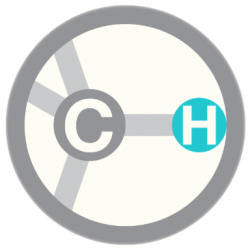Authors: Sharon R. Letchworth, Hilary R. Smith, Linda J. Porrino, Barbara A. Bennett, Huw M. L. Davies, Tammy Sexton and Steven R. Childers
J. Pharmacol. Exp. Therap.,
2000, 293, 2, 686-696
PTT (2β-propanoyl-3β-[4-tolyl] tropane) is a tropane analog relatively selective for dopamine transporters in binding and uptake assays in vitro, with long-acting psychostimulant properties in vivo. To explore its utility in binding to dopamine transporters, [3H]PTT was synthesized and assayed for binding in rat striatal membranes and by in vitro autoradiography. In membranes, binding of [3H]PTT was saturable to a single class of binding sites with a KD value of 3 nM. The pharmacology of [3H]PTT binding in striatal membranes was consistent with that of a ligand selective for dopamine transporters, with dopamine-selective compounds being significantly more potent in displacing [3H]PTT binding than those for 5-HT or norepinephrine transporters. Although the ability of various transporter inhibitors to displace both [125I]RTI-55 and [3H]PTT binding correlated significantly with each other, there was a better correlation of inhibitor potencies versus [3H]PTT binding and dopamine uptake than versus [125I]RTI-55 binding and dopamine uptake. The differences in correlations were most noticeable for compounds relatively selective at the 5-hydroxytryptamine (serotonin) transporter. The autoradiographic distribution of [3H]PTT binding in coronal sections was consistent with the known distribution of the dopamine transporter, with high levels of binding evident in caudate nucleus, nucleus accumbens, and olfactory tubercle. Moderate densities of [3H]PTT binding were also observed in substantia nigra pars compacta, and ventral tegmental area, as well as in the anterior cingulate cortex and portions of the hypothalamus. In addition, nonspecific binding was less than 5% of total binding. Thus, [3H]PTT provides an accurate and convenient marker for the dopamine transporter.

